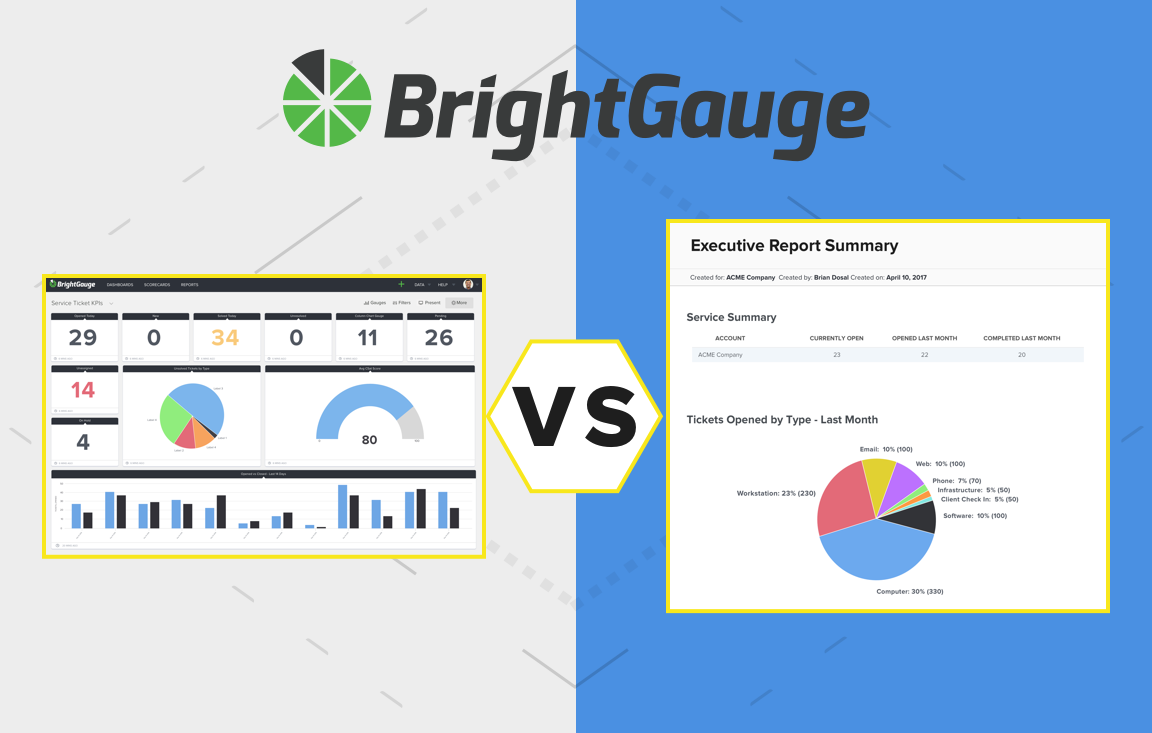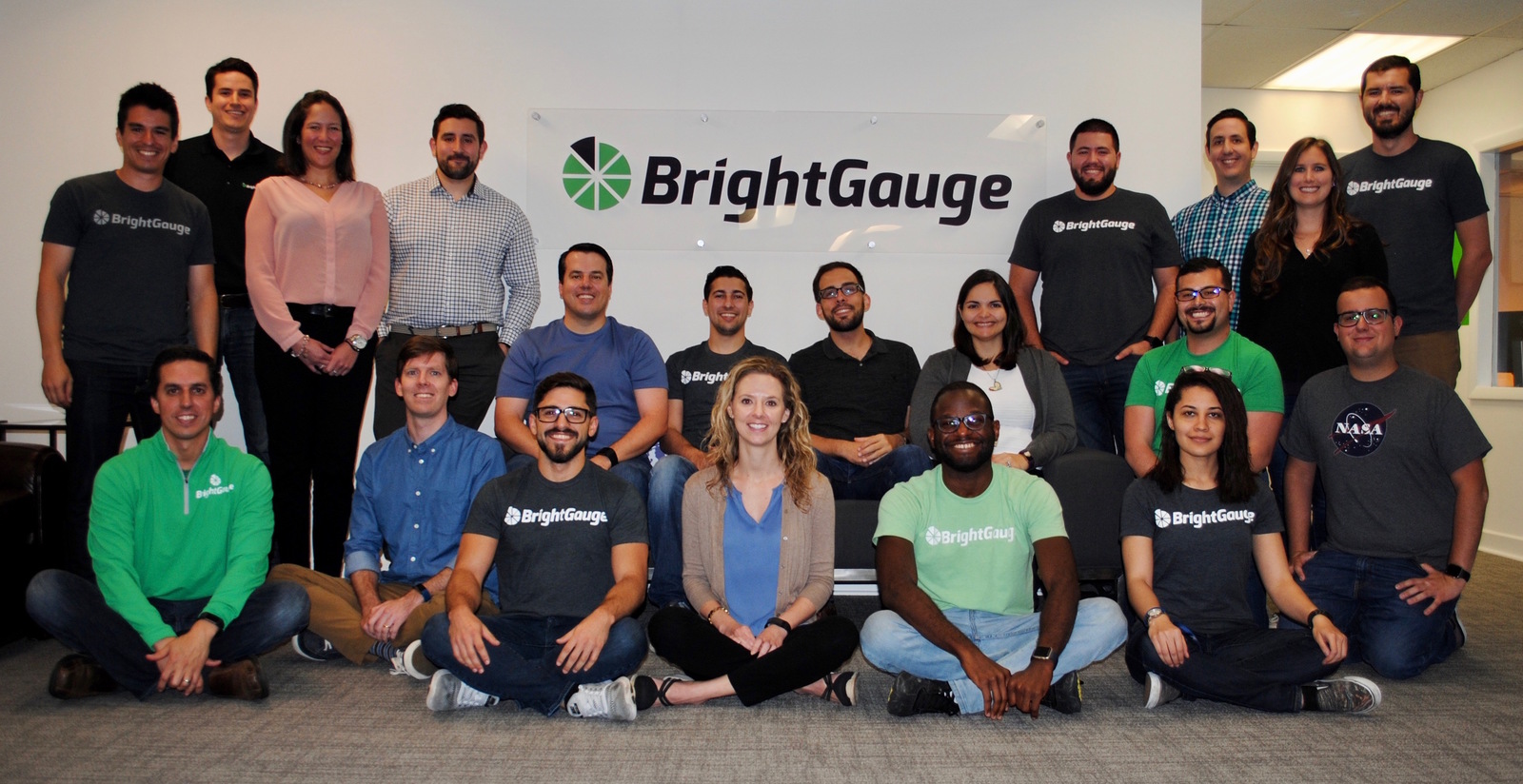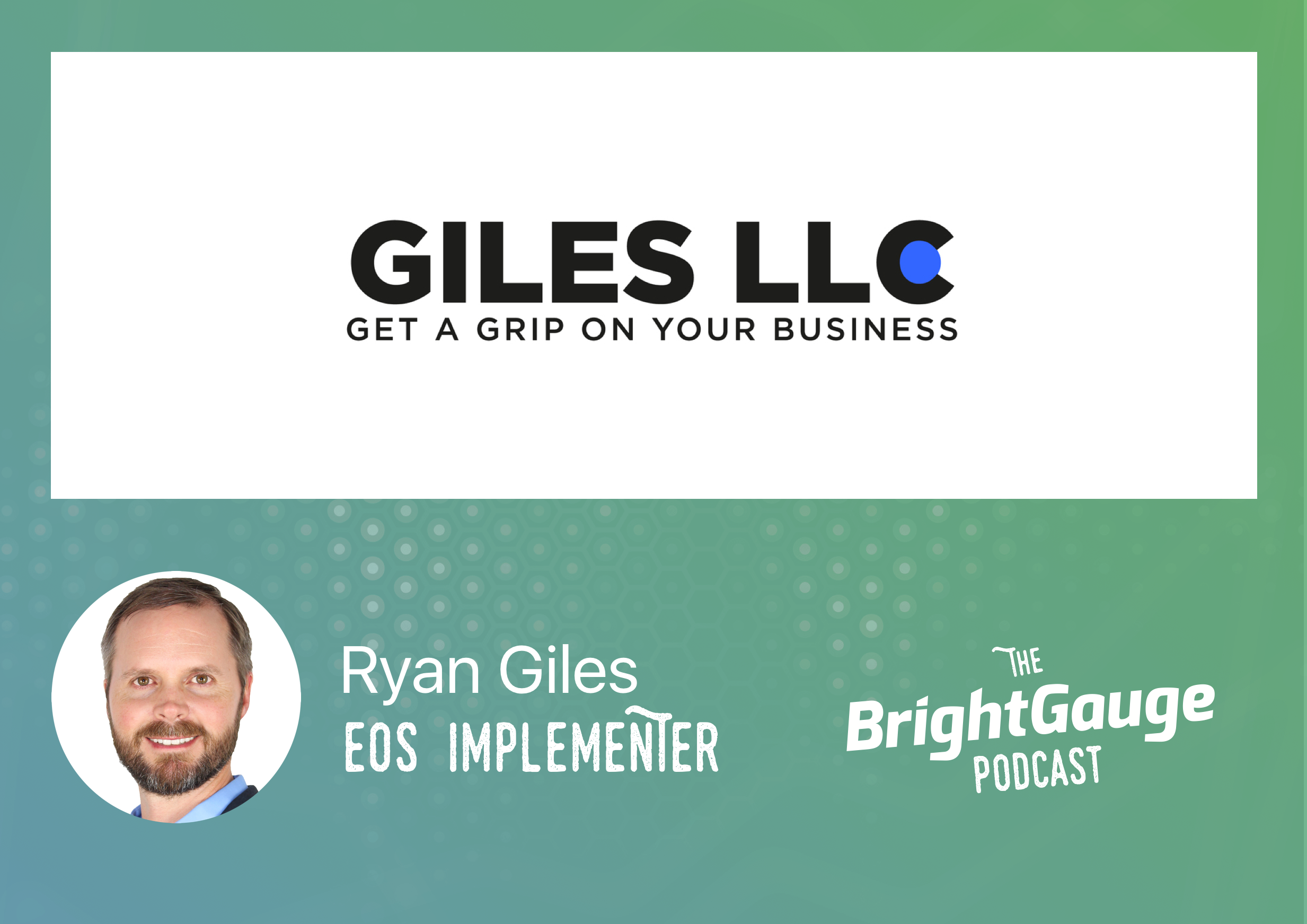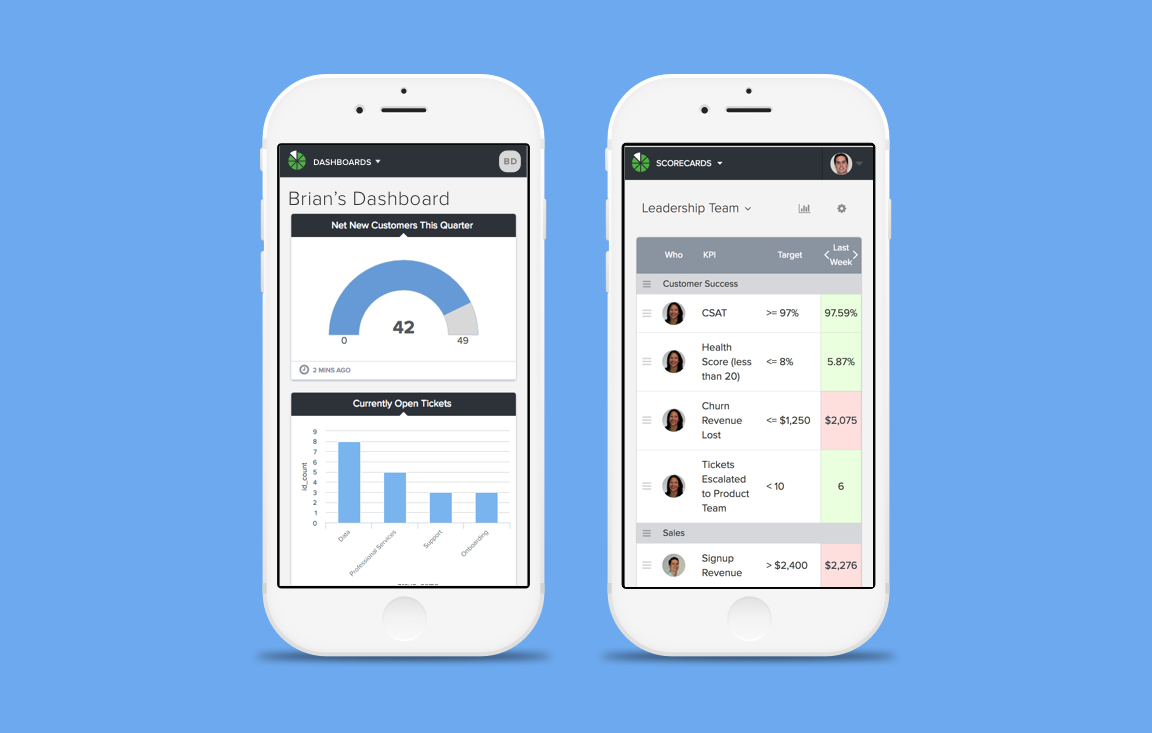Have you found that your margins tend to erode the longer that you stay with a client? It’s a common issue that many MSPs face. Over time, as client’s needs change, the services rendered change as ...
Have you found that your margins tend to erode the longer that you stay with a client? It’s a common issue that many MSPs face. Over time, as client’s needs change, the services rendered change as well. Often, this doesn’t come with a renegotiation of the managed service agreement in full, but rather a small amendment. As your services change, so too do your margins. Historically, many MSPs employed a model of remote management and monitoring. They supplied and managed a range of hardware solutions for their clients. They also often sold new hardware to a client as part of an initial infrastructure upgrade during the onboarding process. Now, as more clients shift toward cloud-delivered solutions, MSPs must find new revenue streams to replace old ones. These issues combined with lowering your prices to compete can be a deadly combination. Competing solely on price overlooks the areas of your business that you have put blood, sweat, and tears into developing. Those areas should be the selling points that differentiate your company from your competition. Valuing your services appropriately entails a lot more than simply comparing prices with a competitor. As any MSP owner knows — there is a lot more that goes into delivering a top-notch managed service than most would assume. Let’s take a look at some of the strategies that MSPs can employ to avoid competing solely on price. Niche Your Company as a Vertical Specialist Want to attract the kind of clients that understand your value and are willing to pay top dollar for an exceptional service? MSPs can charge more by specializing in a particular vertical. Healthcare, retail, law, or other professional services are all popular verticals. Not only does this position your company as the ideal solution to companies in that industry, it allows you to focus on the specific skill sets that will resonate with those prospects. For instance, offering managed services to companies within the healthcare industry comes with its own set of considerations to maintain and facilitate HIPAA compliance. The same is true for servicing law firms. Niching your company as a specialist within a particular vertical may feel like you are pigeon-holing your business and scaring away clients outside of your chosen vertical. In truth, you’ll rarely find that specializing makes generalist clients apprehensive but goes a long way toward attracting clients within that industry. You put yourself in a position to compete on expertise, rather than on price. Target Specific Software Solutions or Vendor Programs Another excellent way to stand-out by niching down is to specialize in specific software solutions or vendor programs. In some cases, this software might only be present in a particular vertical. By marketing your MSP as specializing in a specific software solution, you make it easy to stand out against the backdrop of generalists. Prospects will immediately see that you are a good fit for their business. By building a verifiable track record in specific software stacks, you have proof to back it up as well. As time goes on, your familiarity with specific software solutions will genuinely make your company a more effective choice than the competition. Facilitating these skills and areas of expertise among your teams allows you to compete not on price, but on expertise and real business benefits. Use Real-World Examples to Highlight Service Divides with Competitors When negotiating with prospects, placing too much focus on price can be detrimental. Yes, nearly every client that you speak with will be concerned with the price of your services on some level. But, delving into your price compared to that of your competitors without looking at the reason for those differences is a recipe for margin erosion. You have likely seen competitors lower their prices over time to stay competitive, and it can be tempting to follow that same path. Instead, focus on the differences in service quality and coverage when discussing the differences in price between you and competitors. What do you bring to the table that makes your service worth more? Do you have stats, case studies, or analytics to back it up? Often, you may find that the examples that connect with prospects might be a bit outside the norm. In a recent conversation with Josh Kotler, CEO of Western Digitech, and long-time BrightGauge customer, we discussed this exact topic: “It’s not about price, it’s about the results you deliver,” Josh said. He then went on to give an example that he uses to drive home this point with new prospects. Let’s assume that the average system takes 6 minutes to boot up and login every morning. Generally, employees will go grab a cup of coffee and engage in some water cooler chat while waiting. In total, it might be as much as 15 minutes or more until they are at their desk and ready to start. That’s 15 minutes of time lost. A smart MSP might notice these inefficiencies, point out that their changes would have the system ready to go in just two or three minutes, and point to the boost in productivity for every employee in the company — a measurable improvement. Process is the Differentiator Ultimately, end users don’t leave their MSP because they are running into technical problems or take issue with the price points. Those are just a symptom of the real problem — a lack of business results to justify the investment. They aren’t upset that their user ran into a technical issue. They are upset because of the extended period of downtime that they incurred as a result of that problem. In that same conversation with Josh, he broke it down plainly. “Everything we’re doing is about risk and efficiency,” Josh said. He elaborated further, saying that the priority is always to get the end user back on track and working again. He mentioned how this was especially true for companies like law firms, who bill by-the-minute. For them, fast-fixes are crucial to resuming business and maximizing revenue. It all comes back to process. Not only the processes that you use to quickly resolve tickets but the process of identifying the root problem that caused the issue so that it can be addressed after the ticket is closed. Those processes ensure that you can avoid similar tickets in the future and provide measurable business impact to your clients. Position the Solution, Not the Ingredients Most MSP clients don’t care how something is done as much as the result that it achieves. That means that in the case of an average client, don’t focus on selling the cutting-edge tools and software that you use — sell the benefits that the software creates for your clients. (The exception to this being niche markets who know of the specific softwares for their industry.) Sell business results and peace of mind, not the technology that drives it. Having access to new and innovative technologies is great, but only if they facilitate your company providing better results than your competition, which should be the focus of any negotiation. Moving Forward As clients begin to shift toward cloud-based solutions, it is important that MSPs are able to diversify their revenue streams and position themselves to charge higher prices. To do that, you have to place less focus on price and more focus on the business outcomes. Do you have a success story to share about focusing on business outcomes instead of price when it comes to selling your MSP services? Tell us in the comments below.

While dashboards and reports often feature the same information, the way in which they are used can actually be quite different. It’s a topic that comes up from time to time within our community, as users try to figure out which option is their best bet. To help you decide, we’ve put together our best tips based on different scenarios. In short, the best way to decide between a dashboard and a report (learn more about choosing dashboards vs. scorecards here) is to decide what you’re trying to achieve. Let’s take a closer look: The Best Use for Dashboards At BrightGauge, we always say that dashboards are the cornerstone for providing a complete picture of the health of your company. Because dashboards are extremely customizable, you also have control over what data points you show, and they’re flexible when it comes to your decision on whether you provide daily, weekly, or monthly insights. Dashboards have quite a few benefits that you'll notice when using them: Real-Time & Right Now BrightGauge dashboards allow business owners to select their most urgent KPIs for monitoring, which means that you always know what needs your attention, in real-time. That means no more looking back on your performance in a P&L at the end of the month, wondering what went wrong. Keep your team in sync Another benefit of choosing to display information through dashboards is that you can ensure that your entire team is on the same page. When each team member has job-relevant data on a heads-up display (HUD), all they have to do is glance up to see how their team is trending in real time. A great example of this would be displaying customer satisfaction (CSAT) data on a dashboard for your Service team to monitor throughout the day. Sleek addition to your office decor One of the most popular use cases we hear from BrightGauge customers is that they love to display their dashboards on the wall where they are easily seen during site visits by their prospects. Not only do they look great, but it also shows your potential new customers that you have a handle on your business and your team! Our friends at Nucleus Networks share their beautiful office + dashboard view Increases transparency Employees love to know the inner workings of the company that employs them. Dashboards are a great way to provide transparency to your teams. Allowing your teams to plainly see the advanced KPIs provides insight and gives them the opportunity to better understand the reasons behind business decisions. Drives efficiency Efficiency is critical for the success of any business, but it’s especially a hot topic for any service-focused roles. Often, individual performances play a measurable role in the success of any team and dashboards help because they provide a complete top-down picture of both what is working and what isn't. With this information easily accessible, it’s also helpful to management for addressing which points need to be improved and when. Saves time Traditionally, business owners would have to log into multiple platforms to check their metrics, or ask an analyst to put together a report, both of which can take a significant amount of time. BrightGauge dashboards provide you with a complete picture without the hassle of having to hunt down the data. When all of your KPIs are in one spot, you can use your precious time for other things! The Best Use for Reports In some situations, a report might be the right choice over the dashboard view. Reporting makes it easy to examine trends and show clients the value of the services you provide, plus they also help to address any questions your customer may have - often before they arise. You'll see these benefits when using reports: View a Point in Time While dashboards are perfect for reviewing up-to-the-minute data, reports are ideal for looking at data from a specific time. As an example, if you wanted to export specific data points from your accounting and RMM softwares from a year ago, a report would be a faster, simpler option for generating that data. Push the Information BrightGauge reports are a great way to share information because you set them up once with all of the data points you want to send, and then schedule the regular intervals at which they will be delivered. Need to send your client a weekly recap of your work? Put together your report, schedule the day and time it should be sent to their email, and you never have to touch it again unless you want to make changes to the report. Want to share your KPI progress with your leadership team? Again, set your report up once and your team will have a full update delivered right to their inbox. Great for historical & trending data Reports are perfect for historical and trending data. While dashboards are the best option for real-time overviews, reports allow you to examine specific timeframes with ease. This makes reports an excellent choice for tax season, or for getting an idea of trends within your company or market. Increases Transparency While dashboards are the best bet for offering transparency to your team, the tables turn when you want to keep your clients informed. For clients, reports are a great way to ensure that you always have concrete proof of how valuable your work is. In a managed service business for example, reports are a great way to show clients that SLAs are being met. Drives Efficiency Like our dashboards, reports can also be a great way to examine efficiency and find ways to improve. For instance, if you wanted to show your customer service team that their response times had slipped in recent months, pulling historical CSAT data into a report is the simplest way to do so. When employees can see this data in front of them, they will be more likely to self-correct and examine their own efforts. Saves Time Reports are huge time-savers because once you create and save one, you never have to touch it again unless you want to make changes. If you’ve ever had to spend hours of your time pulling data from multiple sources, crunching the numbers, adding them to a spreadsheet, and maybe even trying to create charts out of that data, then you know that process is a headache waiting to happen. Reclaim hours of your time, and skip the pain relievers with an automated report that will do all the work for you! Next Steps for Mastering Dashboards or Reports There are reasons why both dashboards and reports are excellent features for our customers. Dashboards are the best tool for keeping tabs on your day-to-day business metrics, while reports are excellent for examining historical and trending data. Both give users the ability to customize their output and automate their updates as often as needed. Ready to learn more? Download our webinar recordings: Dashboard Best Practices and Client Reporting Best Practices.

Referrals are the most valuable types of leads for any business. A recommendation from a trusted source is a vote of confidence for your company. Referral leads come to you with a certain level of trust built-in, but learning how to ask for referrals can be difficult for business owners. If you don’t have a referral program in place, the best step that you can take is to ask your current clients if they know anyone that might be interested in your services. It can be a bit nerve-racking the first time that you ask. After all, you don’t want to put your clients in an uncomfortable situation. This is a common fear but is often an unfounded one. Remember that when you provide a great service, your clients will often be happy to recommend you to trusted friends. They will also see the recommendation as a way to build trust and further business relationships with the referred party. If you would like to attract more referrals from existing clients, here is a step-by-step process for starting the conversation. Step 1: Remind the customer of the benefits you provide Asking for a referral isn’t a big deal when you do great work that your clients love. Sometimes they may need a bit of a nudge to remember exactly how much value you provide to their business. By encouraging them to think about the value you bring to the table, you can push them to consider other business owners that might be interested in the same. Partnerships that provide a valuable return for them may also be valuable assets to their business connections. Step 2: Describe your ideal customer Every business owner knows what a nightmare it can be to take on the wrong client. It's always best to focus your efforts on a client that would be an ideal fit. Making the industries or types of companies that you work with clear can prevent a lot of headaches down the road. Additionally, you want to point your clients in the right direction as they consider possible referrals. Let them know exactly what type of businesses you are interested in working with and see if they know anyone that might fit the bill. Mentioning your ideal client can jump-start brainstorming that leads to a recommendation they would have otherwise overlooked. Step 3: Identify a benefit for the referral People are a lot more likely to help out a friend when it is mutually beneficial. Consider ways to provide value in exchange for a referral. You could offer them a small discount, provide some services for free, or even send them a finder’s fee for helping you to secure a new account. You don’t have to go overboard, but providing a small return in exchange for a referral can make it that much more worthwhile for current clients. Remember that some clients will see benefits in simply making the recommendation. Helping other companies improves relationships and strengthens bonds. Drive home how valuable the referral process is for all parties involved. Step 4: Suggest someone they already know Managed service providers often have a lot of insight into their client’s businesses. You may be aware of a few different companies that they work with, or have insight into their broader business relationships. If you know that they have a connection to a company that your services would benefit, there is nothing wrong with making the suggestion. Be active in the companies that you target for referrals. After all, your client may never think to recommend you to a friend on their own. Step 5: Ask for an introduction Once you’ve identified that they know someone who might be a good fit, be forward. Ask for an introduction. Nine times out of ten, your client will be happy to, at the very least, introduce you or outright recommend your service. You've spent a lot of time building a positive relationship with your clients. It would be silly not to leverage those relationships for more business. An introduction in itself is valuable even if it doesn’t result in the sale, as it creates familiarity and could lead to a sale down the road. Don't skip the follow through! Although it seems like common sense, make sure that you follow through. Call the referral when you say you will. Promptly provide any benefits that you offered in exchange for the referral. Put together proposals in a timely fashion. With the built-in trust that you have from your referral, displaying reliability, professionalism and follow-through can go a long way toward sealing a new contract. There is no quote that shows the importance of asking for referrals more than this one: “91% will give referrals if asked. Only 11% will ask.” - Dale Carnegie Want to learn more about how to identify your ideal customer? Download our webinar, featuring MSP Coach Richard Tubb:

We’re excited to welcome Sean Herman to our team as Web Developer! Here’s what you should know about the latest member of the growing BrightGauge crew: The Early Days Sean grew up in Allentown, Pennsylvania, probably made most famous by Billy Joel’s hit song. If that rings a bell, then Sean is quick to point out that the song is actually written about neighboring city, Bethlehem. We could get lost in the reasoning behind that, so let’s continue with Sean’s story… After studying English Literature at Lehigh University, Sean spent about 7 years doing research at FactSet Research Systems, a financial software company. When the time came for his next adventure, he set his sights on Cornell Tech in New York City, a new campus focused on software engineering and tied to the famed Cornell University. After earning his Masters in Information Systems, Sean and his family made the move to Miami so that they could be closer to relatives and also expand into larger living quarters than what NYC offers. He spent a year working in Django and Python software development at Showroom Logic, a digital marketing company for automotive dealerships. Although the company is local, the engineers all work remotely, so while his dachshund made a solid attempt at a collaborative work environment, Sean missed the team element. It was time to consider other options. Teaming up with BrightGauge We always ask our new teammates about why they decided to join us, and what they most look forward to accomplishing here. As Sean puts it, he was sold from the beginning on the fact that our company culture is such a priority, to everyone from our Leadership team down to our crew’s freshest faces. Sure, we do a lot of awesome activities together, but Sean points out that our focus on building a work community is also equally important: we strive to keep every day here fun and also emphasize being supportive and cooperative (our Core Values are Humble, Passionate, and Good). In addition to our great culture, Sean is ready to dive in to his development work! He explains, “With BrightGauge growing so quickly, and serving so many customers, scaling becomes a big challenge. I’ve worked on similar products before, but this is an exciting opportunity to work on some of those big performance and reliability problems that come with success.” After Hours When he’s not helping us build BrightGauge, Sean enjoys spending time with his lovely family: his wife Mary, and his son Jay. He also tries to devote some time to reading science fiction and history works, as well as volunteer his time for web development opportunities. Most recently, Sean completed a big volunteer project for a health tech app as part of the Clinton Health Access Initiative. Join us in welcoming Sean to Team BrightGauge!

At the 10-year mark in his MSP business, Ryan Giles knew that he hadn’t achieved even half of what he had in mind for the time frame. “I knew the right information… there wasn’t any inherent skill gap or things I didn’t know... but it was really a matter of executing”, he explains. When Ryan discovered and implemented the Entrepreneurial Operating System (EOS) at his MSP, the move yielded immediate results - 30% year-over-year growth, an additional 14 points to the bottom line, and triple the valuation. Seeing first-hand what can be accomplished with the system led Ryan to launch a new chapter in his professional journey, this time as Professional EOS Implementer at Giles LLC. Hear what Ryan had to say about the growth impact of EOS, as well as some of his best advice on KPIs for MSPs, on The BrightGauge Podcast. Making the Move from MSP to Professional EOS Implementer: Episode Highlights Ryan’s intro and background (0:47) The specs on Ryan’s previous MSP (5:51) Making a connection with the Entrepreneurial Operating System (10:58) Making the jump from MSP to EOS Implementer (15:26) What kind of customers are you working with? What typical challenges do you see? (16:44) It’s important to know your numbers, but you also have to track data trends (21:23) Getting team buy in on the EOS system (25:07) KPIs for MSPs: how do you help people understand what they should be looking at? (28:30) Q&A: Best business book, favorite resource for personal development, parting advice, how to reach Ryan (35:43) Books mentioned in the episode: Traction: Get a Grip on Your Business, by Gino Wickman The Go Giver: A Little Story About a Powerful Business Idea, by Bob Burg and John David Mann EntreLeadership: 20 Years of Practical Business Wisdom from the Trenches, by Dave Ramsay Profit First: Transform Your Business from a Cash-Eating Monster to a Money-Making Machine, by Mike Michalowicz The Miracle Morning: The Not-So-Obvious Secret Guaranteed to Transform Your Life (Before 8 AM), by Hal Elrod Find more reading suggestions at ryangiles.com/library Want to find out more about The BrightGauge Podcast? Check out all the episodes here.

70+ Metrics for MSPs
Key metrics and accompanying formulas to help MSPs skyrocket growth and success!
Get your KPIs

As a business owner, you are always on the move. Between checking on employees, meeting with clients, and filling in wherever needed, you probably wish that you had more time to keep an eye on your business metrics. It can be tough to find the time to deep-dive into your business stats or just keep a close eye on your daily operations. That’s why we’re so excited about our mobile-friendly dashboards and scorecards! Mobile-friendly dashboards and scorecards are designed to give you access to your most critical metrics anywhere, at any time, through the web browser on your cell. Whether you are in the office, out to lunch, or catching up on Netflix — you’ll never again have to worry about missing a data point. Numbers on the go All business owners need quick access to important business data, including dashboards and scorecards for different departments and teams. You can easily pull up the same ones you use in the office, or create mobile-specific versions that specifically highlight the data that will be most important to you while you are out of the office. No matter which option you choose, you’ll never have to sacrifice access to a single data point. Mobile access for all users One of the best aspects of our mobile-friendly features is that they are not limited to execs and company administrators. Have a client with viewer-level access? The same permissions apply and they will have access to the same exact data on their mobile browser. Have a field tech who needs real-time updates? Now your tech can check in through their phone instead of waiting to return to the office for a status update. With more versatility in sharing and consuming data, your team can be more responsive than ever before. Monitor your team while out of the office The performance of teams as a whole and the individuals within them can change as business and life circumstances evolve. And like most business owners, you’re always on the go, which makes it even easier to lose track of the pulse of your separate teams. To stay on top of the latest trends within your own workforce, it is important that you are able to get an accurate picture of each employee’s performance. That’s where mobile scorecards can make a huge impact - you can monitor individual employee performance with access to the same stats you would usually see in the office. Know your business inside and out When your most important business data is at your fingertips at any time throughout the day, you’ll be more likely to dig into it, closely monitor your KPIs, and discover new trends. Our mobile-friendly dashboards and scorecards will help you spot issues early and retain the information that you need to make smart business decisions, no matter where the road takes you. Get going with your data BrightGauge already gives you easy access to a wealth of business data. Now, mobile-friendly features ensure that you will have access to that data from anywhere in the world with cell reception, right from the palm of your hand!

We’re excited to welcome Brooke Candelore to our team as Web Developer! Join us in learning more about the latest member of the growing BrightGauge crew... In the Beginning Brooke joins us all the way from San Diego, California, where she grew up and even returned to after school. First there was Pepperdine University in Malibu, where Brooke earned her Bachelors in Computer Science, while also racking up celebrity stories including names like Adam Sandler, Gerard Butler, and Pamela Anderson, to name a few. Packing her bags for an entirely different adventure, and on a different side of the country, her next stop was the University of Pennsylvania, in Philadelphia. While Brooke originally thought she would strive for a PhD in Computer Science, she participated in several research projects which made her realize that that she greatly preferred working in a more collaborative environment than computer research would allow. So, she completed her Masters in Computer Engineering and then moved back to sunny San Diego for her first job with BAE Systems, a global defense contractor. While at BAE, Brooke focused on the back end Javascript code for a web app. Joining BrightGauge If you keep up with our team introductions, then you know we always ask each person about what drew them in and sealed the deal for us, so to speak. When we approached Brooke with this question, she explained that when she first started looking for a new position in Miami (based on an imminent move with her husband’s career), she mentioned in an email that she was looking for an “energetic and collaborative software engineering group.” As luck would have it, that email made its way to BrightGauge… where our Co-Founders often use those exact terms to describe our team and our working environment! Brooke did her research on the BrightGauge team - after all, moving across country is a feat itself, but the job and the company had to be the right match as well. Through interviews, an office visit to meet the team, and plenty of emails too, Brooke knew that the fit was right. She goes on to explain that she’s most excited about the team collaboration here, and then says “I love how the BrightGauge office hums with energy. Everyone is working hard and having a great time while they do it.” Outside the Office Moving to the Miami area turned out to be a great match for Brooke, as it’s safe to say that she enjoys just about any kind of water activity like swimming, snorkeling, and scuba diving to name just a few! Fun fact on Brooke’s love for water sports: in high school, she played water polo and joined the swim team and she also swam during her days at Pepperdine, where her favorite event was the 1-mile freestyle swim. When she’s not in the water, you may find her reading, or listening to an audiobook or podcast. Brooke also enjoys spending time with her husband, Tanner, checking out new restaurants, going to wine tastings (that one is mostly her interest), and movie nights. Join us in welcoming Brooke to Team BrightGauge!

One of the biggest struggles that our clients face is finding new and innovative ways to market their MSP business. The industry has grown rapidly in recent years and that growth has brought a wealth of competition. However, there are some simple steps that any managed service provider can take to stand out from the crowd and make their marketing budget stretch further. A few simple steps that any MSP can take to improve their marketing efforts include: Outsource Until You Can Bring In House A critical mistake that many growing MSPs make is being too quick to build an in-house marketing team. While an in-house team is a goal for new companies and a requirement for larger organizations, MSPs shouldn’t be in too big of a rush. Bringing on an in-house marketing team can carry significant risk. Often, it is a better idea to refine your marketing strategies while outsourcing before building your own team. MSPs make their living by pitching the outsourcing of IT services to their clients. Why wouldn’t they take their own advice when it comes to marketing? Additionally, many companies make the mistake of bringing together an internal team one piece at a time. This often leads to a situation where a single person must manage the full scope of the company’s marketing efforts, which is often too big of a job for one person. Instead, consider hiring a person to manage your outsourced marketing. That person can work with agencies and freelancers to put together effective marketing strategies and test new ideas. Cover the Basics, Then Expand Excited MSP owners may be tempted to jump straight into the deep-end of the marketing pool. The problem with this is that they jump in before they learn the front stroke. While it might be enticing to ramp up your digital strategy on multiple fronts at the same time, ensuring you have your basics covered gives you a foundation to build on. That foundation makes all subsequent marketing more effective and facilitates better business decisions. Start with the small things. Update your website with a modern design. Create some helpful and interesting content about your products and services. Give your prospects a place to learn more about your company. Make sure that you give those prospects several ways to contact you, including through phone, email, or consultation request forms. Once you have a solid foundation laid, you can then begin to invest your marketing budget in other areas that will drive visibility. Marketing KPIs No MSP should begin investing heavily in their marketing without first outlining what would make their efforts successful. How do you measure success in marketing? Start by outlining a few key performance indicators that will help you to track your effectiveness. The KPIs and metrics that we typically recommend to clients include: Total website visitors. How many people are landing on your website? Where are they coming from? What are your visitor trends telling you? Total website visitors is a good gauge of how well your marketing is performing generally and provides insight into your marketing operations as a whole. Total landing page visitors. How many people are actually seeing your lead capture forms? Knowing how many visitors are taking the next step provides insight into how qualified your traffic is and how effective your content is. Number of leads. How many are filling out your forms and asking for more information? Leads are the lifeblood of any managed service provider. Lead conversion rate. Out of those that fill out your lead form, how many become clients? Are you attracting the right people to your website? Leads that convert at a low rate may provide insight into issues within your sales pipeline. Number of prospect conversations. Out of everyone that fills out your lead capture form, how many of them end up getting on the phone with you? How many are falling through the cracks? Number of opportunities from new prospects. Of those that hop on the phone with you, how many make it as far as discussing a potential partnership with your MSP? This can provide insight into issues with phone sales if you find that not many opportunities are being generated. These are just a few of the many KPIs that could be useful to MSPs or any company that does business online. They provide a starting point for tracking, evaluating, and improving your MSP marketing efforts. Next steps with MSP marketing Consistent and careful marketing is vital for keeping your sales pipeline full. However, many growing companies try to ramp up too quickly by bringing on an in-house team. You have to learn to walk before you can run. Start small, ensuring that you have your basics covered and slowly expand your marketing efforts as you begin to see results. If you would like to learn more about effectively marketing your MSP, check out our Marketing for MSPs Webinar.

MSPs are known for having information floating around - on sticky notes, on spreadsheets, and in people’s heads. But at the core of it all, “almost everybody knows that they have a challenge around process and access to information”, explains IT Glue CEO, Chris Day. In his conversation with BrightGauge Co-Founder, Eric Dosal, Chris goes on to explain how his days as founder of an MSP ultimately led to IT Glue and a documentation solution. Tune in for advice on how to be successful with documentation, common documentation mistakes made by MSPs, and even a few tips on how to get your team on board with documentation. Solving the challenges of process & documentation for MSPs: Episode Highlights Chris’ intro and background (0:47) A typical day as CEO, and the parallels between software and MSP businesses (4:28) A closer look at Fully Managed, the MSP precursor to IT Glue (8:57) Staying strategically involved at quarterly meetings (11:38) Which KPIs are most important at Fully Managed? (14:16) The KPIs Eric recommends from MSP experience (17:15) What kind of MSP uses IT Glue? What is their size and what are their struggles? (20:30) Getting started with IT Glue and how to be successful with documentation (25:30) Common mistakes MSPs make with documentation (28:00) With some employees, it’s a struggle to get their time logged, so how can you get them to update documentation? (30:08) Coming soon at IT Glue (31:59) Q&A: Best business book recommendation, favorite resource for personal development, advice for MSPs, how to reach Chris (36:08) Books as recommended in the episode: Good to Great: Why Some Companies Make the Leap...And Others Don’t, by Jim Collins The 5 Dysfunctions of a Team: A Leadership Fable, by Patrick Lencioni Mastering the Rockefeller Habits: What You Must Do to Increase the Value of Your Growing Firm, by Verne Harnish Want to find out more about The BrightGauge Podcast? Check out all the episodes here.

A company's ability to develop leadership plays a huge role in its ability to scale. Leadership is the lifeblood that keeps teams productive and focused but can be difficult and expensive to find in new hires. Great leadership in small to mid-sized companies often comes from their ability to develop those leaders. Developing leadership requires well-cultivated processes. According to Training Mag, only 8% of companies have taken the time to define their unique leadership requirements. But in a 2016 Borderless leadership development survey, leadership development was believed to be the main driver for business results. These statistics show a deep disconnect exists between organizational success and leadership development, which means that if your organization can master a leadership development program you could see tremendous gains. Delegate vs. relegate One distinction to consider is the difference between delegating and relegating a task. Relegating a task means to assign that task to an individual in a lower position. Delegating is when you assign a task to someone who essentially takes your place. Instead of "passing it off," you are finding a suitable replacement. Delegating a task is typically seen as the preferable way to hand tasks off professionally. Delegation gives the individual more power over the outcome, and assigning the task isn’t so much giving an order as asking for help. These types of distinctions are important for fostering a collaborative environment. Avoid the boomerang effect The "Boomerang Effect" is when you delegate a task, only to have it fail and end up back in your lap. In the end, the task ends up taking longer than if you had just done it yourself. There are a few reasons why the boomerang effect is a common problem for growing companies: Improper training. Sometimes you hand off a task to someone that has not been properly trained in that task. As an owner, you may have done it a thousand times before. But that doesn’t mean that your staff is familiar with it. Make sure that you always have provided proper training in any task before delegating it to a member of your team. Lacking instructions. Even when a member of your team has been trained in a specific task, you still need to make sure that they have descriptive instructions on-hand. Spell out exactly what you would like done, and provide tips for completing it in a timely fashion. Poor choice of delegation. Part of being a great leader is knowing your team members and the areas in which they thrive. Make sure that you are delegating a task to the right person. Choose those that possess a skill set that matches the task. Overcome your fears For business owners that have been in charge of their operation for a long time, handing off tasks can be a bit difficult. It may take some time to learn how to overcome that fear. We recommend that you start small, delegating basic tasks to those around you. As you become more familiar with the process, gradually ramp up the importance of the types of tasks that you delegate. Unfortunately, years of running a company can turn an owner into a bit of a control freak. In the early days of a business, this is often a good trait, as it ensures that ownership is focused and aware of problems within a company. As your business grows, learning how to overcome that need to control all aspects of your business will open new doors and help lead to sustainable growth. Too often the leaders themselves become a bottleneck, with fear getting in the way of progress. Keep going until you are comfortable delegating any task within your business, big or small. Use career roadmaps for leadership development For every employee that you hire, work with them to create a career roadmap that helps them get to where they want to go. Not only will this be seen as helpful by the employees in your company, but it will motivate them to stay loyal and try to move up internally. Work closely with new hires and veteran employees alike to put together roadmaps that lead to senior positions within the company. This not only helps them to ensure that their skills are well-matched with their proposed future within the company, but it gets them thinking critically about future leadership positions. This also gives you a plan for future training for each individual employee. Develop processes The only way to truly scale and grow as a company is to allow others to take on more responsibility. However, having others take over important tasks can be a gift when it works out in your favor, and a curse when it backfires. To give yourself the best chance at success, develop processes that make the path to a favorable outcome clear. Without a clear path to success, how can you expect your teams to get it right? Put together training sessions that cover every aspect of a given task and the processes for carrying it out. This provides your team with a proven way to ensure a positive outcome and also provides leadership with peace of mind when delegating tasks. Conclusion As a business owner, it can be difficult to begin delegating important tasks to your teams. There is a learning curve both for existing leadership and team members that are looking to step up to the plate. By understanding the roadblocks that could impede you and working to develop processes that assist with the completion of the task, you give your organization the best chance at success.

There are few thrills that can match the feeling of landing a new, high-value client. Overnight, the financial position of your company can change. It’s no surprise that most businesses jump at any chance to sign a big client. Unfortunately, the excitement of landing that client can quickly put a company in a precarious position. Few businesses take the time to stop and think about the adverse effects that could come from accepting such a large client. With new cash flow comes new responsibility, and not all MSPs are equipped to suddenly meet those demands. Aside from landing one sizable client, the more common threat of client concentration comes from allowing a handful of clients to become the driving force of revenue. A good rule of thumb to follow is to ensure that your top 5 clients don’t account for more than 25% of your revenue. While simple rules like this are helpful, MSP owners should look to improve their negotiating and onboarding processes to protect themselves against client concentration. Consider viability before signing any contract A huge contract is hard to turn down, but too often businesses get ahead of themselves during negotiations. If you find yourself in this position, take a few deep breaths. This new contract may very well be a huge boon to your business, but it’s important to do your due diligence first. A few questions that any MSP owner should ask themselves before signing on the dotted line include: Do we have the required equipment to fulfill this contract? If not, what kind of investment will be required from us? Do we have the manpower and required expertise to provide exceptional service? How will accepting this contract change our daily operations? If the client were to fire us or move on, would we need to layoff employees? Does the client have an understanding of the agreed upon scope? Will this influx in revenue make us complacent in business development? A big new contract can be a step forward for any MSP, but only if it makes sense for both parties. Take some time to examine the effects that signing a large contract could have before rushing into it. Prioritizing client work and your business Big clients require big commitments from MSPs. It's important to ensure that you don't lose sight of the big picture. When you commit yourself to a high-value client, you can’t allow that client to become the main focus of your business. Companies that survive with a small number of high-value clients are teetering on a very dangerous ledge. Doing so takes the control out of your own hands as the owner, and puts your entire company at risk. Economic downturns, client bankruptcy, and late payments are just a few of the ways this approach could backfire at no fault of your own. Never put yourself in a position where the loss of a small number of clients means the loss of business viability. Growing too fast can lead to growing pains and ultimately leave you worse off than you were before that large contract. Diversify your client base To ensure that a small group of clients is never responsible for too much revenue, you must find ways to diversify your client base. To start, you should always have an idea of the largest client that you would be willing to take on. Actively pursue a healthy balance of small, medium, and large clients, even if it means tailoring your marketing to attract specific client types to protect your business against unexpected losses. Setting scope and expectations This isn’t to say that MSPs should avoid taking on big clients. A big client that you are prepared for can take your business to the next level. But it’s important to set expectations from your first interaction with a prospect. Clear milestones and targets set the stage for long-term business relationships. They give you ground to stand on when you feel unmanageable demands have been asked of your company. To start, outline exactly what the client will need. What services will you provide? How often will you meet with the client? How will feedback be delivered? Also, outline how upgrading the service will work to avoid negative outcomes from growing your business relationship. Having these details ironed out from the get-go ensures that you are not drawn into a relationship that weighs your company down. It also gives you the ability to push back when unfair demands are being asked of your organization. Creating a comprehensive scope outline sets expectations for both parties and puts your company in a position to succeed. Know how to say “no” Ultimately, maintaining a healthy balance comes down to recognizing a problematic partnership and knowing when to decline. There will always be that voice in the back of your head telling you that you can manage. But when a client’s demands are too large, trying to meet those demands can weigh down your business and hamper growth. Interested in learning more about choosing the right customers for your business? Download our free webinar “Tips on Identifying Your Ideal Customer” featuring MSP Coach Richard Tubb.












